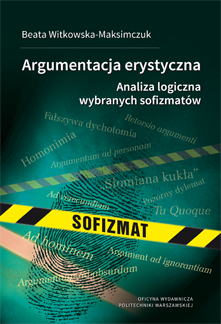Opis
The manual is primarily intended for laboratory classes in the subject “Biology and Ecology”. It is also a valuable source of information for students of the Erasmus program participating in classes in the subject “Environmental Biology” who have not previously completed a course in the biological and microbiological laboratory.
The manual consists of 9 chapters.
Chapter 1 deals with health and safety regulations in force in the biological laboratory; it con-tains information on the necessary equipment including personal protective equipment and work rules that allows to avoid adverse events in terms of both student safety and the suc-cess of research.
Chapters 2 – 5 focus on observations of microscopic algae, protozoa, fungi and bacteria. These are groups of microorganisms that will be used in the analysis provided for later in the semester as well as during further education in the field of Environmental Engineering. At the same time, students learn to use the basic optical equipment which is a bright field microscope. They also learn to use an immersion objective lens to observe bacterial cells. On this occasion, students become familiar with methods of simple and differential staining using a method developed by Hans Christian Gram (distinction between gram-positive and gram-negative bacteria). Micros-copy classes allow students to notice the characteristics of the objects observed such as size, proportions, characteristic layout of cell components, or movement.
The experiments included in chapters 6 – 9 relate to the introduction to laboratory technique and the methods of testing and assessing the quality of air and water, as well as the toxicity of chemical compounds on the environment. Chapter 6 deals with the techniques for isolating bacteria from the aquatic environment in order to assess their numbers by the indirect culture-based methods. It makes students familiar with the dilution series, spread-plate and pour-plate techniques, as well as methods used in transfer of microorganisms to solid and liquid media. Knowledge about bacterial cultivation, the ability to distinguish bacterial colonies or growth in a broth is the basis in the test of disinfectants (chapter 7) and also air and water analysis (chapter 8 and 9, respectively).
The disinfectant test is conducted using the agar plate-sensitivity method and allows to assess the antibacterial effectiveness of selected disinfectants against gram-negative and gram-positive bacteria.
Biological air analysis is carried out by the cultivation-based methods using gravitational set-tlement and inertial impaction as sampling techniques. Students estimate the number of micro-organisms in the air and then compare the results with the European Union or WHO guidelines for indoor air to assess the level of microbial contamination.
Bacteriological analysis of water for sanitary purposes is a practical ability to isolate indicatory bacteria from tap and surface water. Students learn filtration and multiple tube methods. Based on the results they assess potability of drinking water and usefulness of surface water for rec-reation according to Polish quality standards.
Each instruction is preceded by an introductory section. The practical area consists of the fol-lowing parts: 1. aim and scope, 2. materials (media, cultures, equipment, reagents), 3. course of the experiment (procedure), 4. results, in case of the analysis. Results portion provides also tables to record results and/or observations. At the end of each chapter, reference is made to the literature used.




